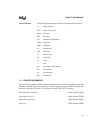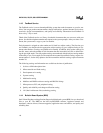
8XC251SA, SB, SP, SQ USER’S MANUAL
1-4
Instructions Instruction mnemonics are shown in upper case to avoid confusion.
When writing code, either upper case or lower case may be used.
Logic 0 (Low) An input voltage level equal to or less than the maximum value of
V
IL
or an output voltage level equal to or less than the maximum
value of V
OL
. See data sheet for values.
Logic 1 (High) An input voltage level equal to or greater than the minimum value of
V
IH
or an output voltage level equal to or greater than the minimum
value of V
OH
. See data sheet for values.
Numbers Hexadecimal numbers are represented by a string of hexadecimal
digits followed by the character H. Decimal and binary numbers are
represented by their customary notations. That is, 255 is a decimal
number and 1111 1111 is a binary number. In some cases, the letter B
is added for clarity.
Register Bits Bit locations are indexed by 7:0 for byte registers, 15:0 for word
registers, and 31:0 for double-word (dword) registers, where bit 0 is
the least-significant bit and 7, 15, or 31 is the most-significant bit. An
individual bit is represented by the register name, followed by a
period and the bit number. For example, PCON.4 is bit 4 of the
power control register. In some discussions, bit names are used. For
example, the name of PCON.4 is POF, the power-off flag.
Register Names Register names are shown in upper case. For example, PCON is the
power control register. If a register name contains a lowercase
character, it represents more than one register. For example,
CCAPMx represents the five registers: CCAPM0 through CCAPM4.
Reserved Bits Some registers contain reserved bits. These bits are not used in this
device, but they may be used in future implementations. Do not write
a “1” to a reserved bit. The value read from a reserved bit is indeter-
minate.
Set and Clear The terms set and clear refer to the value of a bit or the act of giving
it a value. If a bit is set, its value is “1;” setting a bit gives it a “1”
value. If a bit is clear, its value is “0;” clearing a bit gives it a “0”
value.
Signal Names Signal names are shown in upper case. When several signals share a
common name, an individual signal is represented by the signal name
followed by a number. Port pins are represented by the port abbrevi-
ation, a period, and the pin number (e.g., P0.0, P0.1). A pound
symbol (#) appended to a signal name identifies an active-low signal.


















